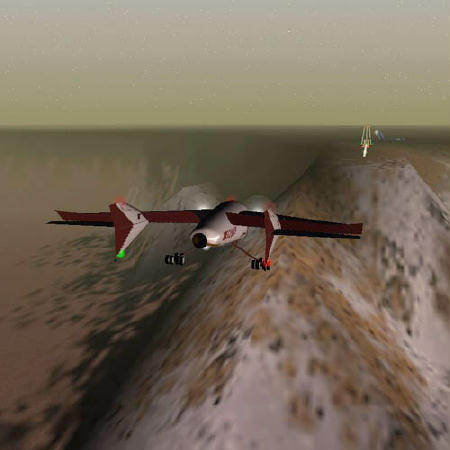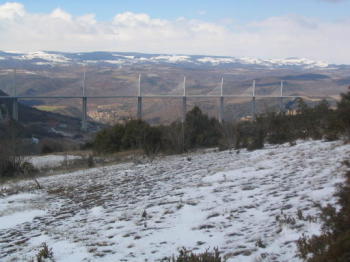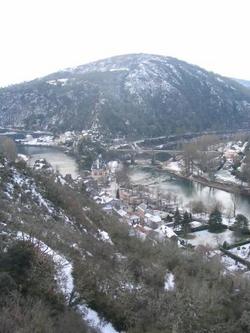We are developing the social individualist meta-context for the future. From the very serious to the extremely frivolous... lets see what is on the mind of the Samizdata people.
Samizdata, derived from Samizdat /n. - a system of clandestine publication of banned literature in the USSR [Russ.,= self-publishing house]
|
This NASA PSA works on so many levels I hardly know where to begin.
It does not at any point say “only socialist space programs can get us there”. You could infer that if you saw it in certain contexts, but then again, if you saw it at a space entrepreneurs get together you would not. The underlying message is a good one and I thoroughly applaud it. We will reach for the stars. We will colonize the solar system. We will leave the cradle.
The infant is a young Paul Allen or Bob Bigelow or Burt Rutan… not a future employee of the State.
Ed: You may need to down load the mpg and play it locally.
According to a number of articles sent out by the SMCCDI, government forces have touched off riots in a number of locations. Rather than give you news third hand, I will just let you read for yourself:
Violent clashes rock Oshnovieh
Workers peaceful protest turns into clash with security forces
Iranian Teachers Protest Again
Since I am already on the subject of Mars… the X-Plane flight simulator now includes a number of Mars ports at which you can land your SpaceShipOne. Here is a recent announcement of the Mars extensions to the X-Plane product:
Trans-global flight on the planet Mars is now available to X-Plane
pilots. If you don’t have the Mars Data CD set….go to x-plane.com and buy it!
Over 70 ‘marsports’ have been constructed, several with ILS and GS, to provide the Mars enthusiast (like myself) an opportunity to explore the future home of human beings…today!
X-Plane users may either download the complete Mars X-perience package, or simply the apt.dat and nav.dat files. The MXP .zip file contains Custom Scenery, maps, and the “Cydonia Station” shuttlecraft. The SS1MARS is a modified version of SpaceShipOne engineered to tackle the thin Martian atmosphere (original X-Plane flight model created by Curt Boyll).
This data has not been tested on XP-8, but Robin Peel has indicated he will be giving it a run very soon.
You can find out more about it here.
 Credit: Dreamsenses Credit: DreamsensesI wish I could afford the hardware upgrade so I could play too!
Jim Plaxco of the National Space Society tried some creative processing of Mars image data with artistic rather than scientific goals in mind. Some of the results are quite to my taste; others are more for lovers of the abstract.
I cannot help but imagine art such as this in the lobby of some Martian corporate headquarters or perhaps in the Marsport Bigelow reception area.
Jim has a website for his artistic renderings. This is a web site under-construction and at present contains only a fraction of his work. I recommend you check back every few weeks.
 With permission of the artist, Jim Plaxco With permission of the artist, Jim Plaxco
While many aspects of intellectual property rights are clearly defined legally by such devices as patents and trademarks, the situation is not quite so clear with other things that may be defined as intellectual property. Take titles of merit, such as ‘World Champion’.
In team sports, this is not really an issue. For team disciplines can only take place in a regulated environment. For example, in football, the question of which is the strongest club in Europe is one which there is a tournament called the “Champions League” and that is designed to allow such questions to be decided. And it is generally agreed by all and sundry that UEFA are the “fit and proper” people to run this tournament (except perhaps by FIFA, but that is by the by).
For individual sporting disciplines, it is not so easy to regulate these things. Golf, for example, has rarely if ever had any reference to a ‘World Champion’; only recently has it even agreed on a ranking system to determine who is the best player in the world. Indeed, although I do not know much about golf, it seems to me that golf is a sport that seems to discourage this question altogether.
Chess, another individual player sport, is a different kettle of fish. It is also an illuminating example of how sporting titles can gather prestige enough to have a real financial worth to them, in the same way that intellectual property does. Indeed, it can be seen from the example of chess that to be a ‘world champion’ is to have an asset of considerable value. → Continue reading: Who owns sporting titles, and what are they worth?
Cricket will be suspended indefinitely at Albion College from now on, in order to preserve the playing fields, it has been announced.
Head Boy, Mr ARP Blair said: “The groundsman has explained to me that it is vital to maintain the cricket square and outfield that have nurtured Albion’s spirit of fair play for nearly 300 years that we stop cricket immediately. Of course we must do what the groundsman says. His staff have have had great difficulties arising from boys running up and down on the pitch and using bats and balls in a most irresponsible manner. By stopping play indefinitely, he has explained, the mystery of the soil and their special gardening techniques (which he will explain to boys sitting the Rural Sciences exam), will allow them to keep the playing surfaces safe from any boys who might tear up the grass.
“We have to trust the groundsman in this. He, after all, knows more about fields than any number of cricketers. I’ve heard that some people are saying he only wants this so that he can spend more time drinking in the pavilion, and that I’m only supporting him to curry favour with those boys who have never seen the point of games or latin and would like this to be an agricultural college. Anybody saying such things is a traitor to the school’s tradition, and if I find out who they are they will be very severely dealt with.”
[Apologies to overseas readers for over-British allusions. Glossary available on request]
I was tired of being poor.
-Paul Rutherford, a sales associate at Fry’s Electronics in Burbank, California, when I asked what prompted him to emigrate from the UK to the US

Much has been written about the recently opened Millau Viaduct in the south of France, both here and elsewhere. It takes the form of statistics: 245m from the foot of the valley to the deck, 343m from the foot of the valley to the top of the towers, 2.5km long in total. A cost of €394m to build.
Going out of my way to see the great bridges of the world is something that I do, and after reading all this I was struck by a strong urge to go and see the bridge for myself. So, I flew to Toulouse this last weekend. I rented a car, and headed for Millau. I was in no hurry. I stopped for a pleasant lunch in Albi, and rather than going up the main road, I then wound along the litte roads following the Tarn valley. One thing became obvious quickly. The Tarn valley is a huge gash through the south of France, going for hundreds of kilometres. There was clearly no easy way to build a motorway across it, anywhere. The immensity of the new viaduct was clearly out of necessity.
I had some thoughts of following the Tarn river valley all the way from Albi to Millau, with the idea that I would appreciate the scale of the valley, finally glimpse the viaduct in the distance when I was a few kilometres from it, (or maybe tens of kilometres, depending on the geography), and then approach it and eventually drive under it.
As it happened though, this was not quite what happened. The drive up the valley was spectacular, but it was a difficult drive, due to a narrow road (with some very lengthy narrow tunnels from an earlier era of engineering), and some awkward driving conditions. (It was very cold. Much of the river valley and even some of the road was covered in snow). And I kept stopping due to the fact that the scenery was beautiful and at times remarkable. (The small village of Ambialet, built in a truly extraordinary curve in the river, kept me for some time, as did a few other places).

This part of France had an odd feeling of abandonment about it though. There are a lot of small villages along the river, containing beautiful old stone buildings, but these contained very few people and. I get the impression that the valley was a (fairly marginal) agricultural location a generation or two back (potatoes I would guess) but that is now gone. There are a few shops in the villages but these were mostly closed. The permanent population of these places appears to be small, and demographically not especially young. The buildings are generally in good repair, however. I get the impression that this place is highly seasonal. Tourists and owners of holiday homes probably come in summer in huge numbers for canoeing, kayaking, hiking, hang-gliding and various other activities, but not in the winter. Which is a shame, because in winter under the snow the valley was beautiful. But to attract people in winter you need to offer skiing, and this is not skiing country.
But on to the bridge. → Continue reading: Very Cool
I was delighted by the first What If? book. So I eagerly purchased its successor volume, More What If?, when I also came across that in a remainder shop.
I buy lots of books in remainder shops – my intellectual efforts beiong heavily influenced by chance purchases – and often only read them months or years later. So it has been with More What If? I am now, finally, reading it. Not in any particular order. Just dipping at random, in among reading and writing other stuff. (This posting is not a review, merely some speculative reactions to this follow-up book, but here is a review, which includes a contents list.)
And the more I dip, the more convinced I am of the extreme efficacy and vividness of this particular way of writing about the past. Reviewers like the one linked to above can get rather blasé, because they know all this stuff anyway. (As he says in his first paragraph, the professional historians all have what-if conversations when doing their degrees.) But for the rest of us, this is a truly terrific way to learn history, because it brings it so alive. Suddenly, the uncertainty and unpredictability of what it was actually like living in what is now the past but was then the present is brought fascinatingly to life. Regular history tells you what happened, one damn happening after another, but it often neglects to tell you which happenings mattered most, and why. The What If? formula cuts down on the number of happenings, but explains in great detail how important each selected happening was, by telling you not only what else happened because of it, but also what would have happened had the happening itself not happened, or happened differently. → Continue reading: More What If?
My former flatmate Drew Johnson has been setting up a new think tank. It has just launched a website. Called the Tennessee Center for Policy Research, the organization aims to do for the US state of Tennessee the excellent job that many state-based think tanks have been doing elsewhere in the United States. So get to work with the Jack Daniels and Coke and give Drew some moral support by visiting his site.
There is an interesting article in The American Conservative by Robert Locke called Marxism of the Right, by which he is referring to libertarianism. The ‘money quote’ being:
If Marxism is the delusion that one can run society purely on altruism and collectivism, then libertarianism is the mirror-image delusion that one can run it purely on selfishness and individualism. Society in fact requires both individualism and collectivism, both selfishness and altruism, to function.
Like most right-statist (conservative) criticisms of libertarianism, this one fails on several levels. In this article’s mitigation, libertarianism (like conservatism) means different things to different people and so no doubt some self-described or de facto libertarians believe that ‘pure’ selfishness and individualism are all a society needs to function (that said, I reject the implied semantics suggesting that selfishness and altruism are mutually exclusive as I do not accept the Randian definition of altruism that Locke rather amusingly seems to use). Yet most well considered libertarians do not really take such a simple view of things as Locke suggests.
He asks libertarians many questions:
What if a free society needed to draft its citizens in order to remain free?
Then is it in fact a ‘free society’ to start with? Or is it just ‘less un-free’ that some alternative? More correctly however ‘society’ does not draft its ‘citizens’ (and I prefer the more honest term ‘subjects’), only states do that… and the two are not the same thing at all.
What if it needed to limit oil imports to protect the economic freedom of its citizens from unfriendly foreigners?
But whose ‘economic freedom’ is really being talked about here? I find it bizarre that in 2005 this argument is still being made about a fungible globally traded commodity.
What if it needed to force its citizens to become sufficiently educated to sustain a free society?
I would be curious to know if Locke feels that society in the United States was hugely less free before the introduction of educational conscription. I also wonder if he feels that the low quality state education imposed on children in the blearier parts of many large US cities has made those people more free and if so, why?
What if it needed to deprive landowners of the freedom to refuse to sell their property as a precondition for giving everyone freedom of movement on highways?
And yet Japan, a nation of extraordinarily high land prices, manages to create a rail system vastly superior to that in the USA without legal powers of compulsory purchase. There are always alternatives.
What if it needed to deprive citizens of the freedom to import cheap foreign labor in order to keep out poor foreigners who would vote for socialistic wealth redistribution?
But surely here the problem is not the origin of voters but rather unconstrained democracy. This is not an argument for controlling immigration but rather for sensible constitutional constraints which set the acceptable limits of politics. → Continue reading: Marxism of the Right?
The Millau viaduct is simply mindblowing. You may know in advance how big and how high it is in terms of numbers, but when you see it it really blows you away. I have seen a lot of great works of engineering, but I cannot remember the last time I saw one that was simply as awe inspiring as this one.
– Michael Jennings on the French engineering miracle previously reported on and argued about here
|
Who Are We? The Samizdata people are a bunch of sinister and heavily armed globalist illuminati who seek to infect the entire world with the values of personal liberty and several property. Amongst our many crimes is a sense of humour and the intermittent use of British spelling.
We are also a varied group made up of social individualists, classical liberals, whigs, libertarians, extropians, futurists, ‘Porcupines’, Karl Popper fetishists, recovering neo-conservatives, crazed Ayn Rand worshipers, over-caffeinated Virginia Postrel devotees, witty Frédéric Bastiat wannabes, cypherpunks, minarchists, kritarchists and wild-eyed anarcho-capitalists from Britain, North America, Australia and Europe.
|







